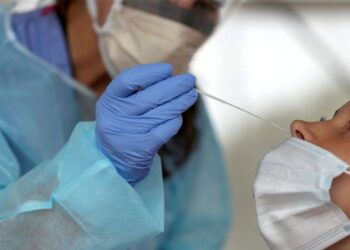Low blood pressure, or hypotension, is when the force of blood moving through your arteries (blood vessels) is lower than usual. Low blood pressure is natural to some people but usually does not cause symptoms. Underlying health conditions, certain medications, pregnancy, and dehydration can cause low blood pressure in others.
Sudden drops in blood pressure—which might occur after eating a meal or standing up too quickly—can lead to dizziness, lightheadedness, and fainting.1 If you frequently experience these episodes, lifestyle changes may help raise your blood pressure and keep it within the optimal range.
Drink More Water
Your blood is about 90% water, so your overall blood volume (or the amount of blood that flows or circulates through your blood vessels) decreases when you’re dehydrated. Decreased blood volume can contribute to low blood pressure. Maintaining proper hydration by drinking fluids helps prevent dehydration and improves blood pressure. The National Academies of Medicine generally recommend drinking 6 to 12 cups of water daily.
Increase Your Salt Intake
Sodium (salt) regulates blood pressure. Consuming slightly higher amounts of salt can help the body retain water and increase blood volume, raising blood pressure.
It’s worth noting that excessive salt intake can have adverse effects on blood pressure and increase your risk of heart disease, so consume sodium in moderation and opt for healthier foods that contain sodium. These foods may include beans, nuts, or cheese, among other salty foods. It’s also important to talk to your healthcare provider to determine whether eating more salt is right for you and which foods are best for your nutritional needs.
Consume Caffeine
Caffeine is a stimulant that constricts (narrows) blood vessels, temporarily increasing blood pressure. Coffee and other caffeinated beverages (like green tea) can temporarily spike blood pressure within 30 minutes of consumption. The effects of caffeine typically wear off within four hours. While caffeine can be beneficial in some cases, too much can lead to jitters, anxiety, and trouble sleeping, so moderation is key.
Wear Compression Stockings
Compression stockings are stretchy, snug-fitting socks that apply pressure to the legs, helping improve blood flow and preventing blood from pooling in the legs. Wearing knee- or thigh-length compression stockings improves blood flow from the legs to the heart and may help raise blood pressure. Compression socks that extend to the waist may also help increase low blood pressure.
Eat Small, Frequent Meals
A sudden drop in blood pressure after meals (medically known as postprandial hypotension) is typical in older adults and people with certain health conditions. Usually, it occurs 15 minutes to two hours after eating.
Postprandial hypotension causes dizziness, lightheadedness, and nausea. If you experience these episodes after eating, switching from three meals daily to several smaller meals throughout the day can help maintain steady blood pressure levels.
Include More Vitamin B12 in Your Diet
Vitamin B12 is essential for your autonomic nervous system, which regulates several body functions, including blood pressure control. Research shows that a vitamin B12 deficiency can lead to orthostatic hypotension, a sudden drop in blood pressure when standing.
You can increase your vitamin B12 levels by eating fish, dairy products (e.g., milk or cheese), and poultry (e.g., chicken or turkey). However, if you have a vitamin B12 deficiency, you must get treatment through supplements, oral pills, and other treatments your provider may recommend.
Try These Exercises
Tensing your muscles and practising isometric exercises (static movements that contract your muscles) can help improve circulation and increase blood pressure to prevent dizzy spells. These exercises are beneficial if you frequently develop hypotension symptoms when standing up or getting out of bed:
- Marching in place by moving your feet up and down
- Make a fist with your hands and clenching for a few seconds before releasing
- Crossing one leg over the other and tensing your leg and buttock muscles
- Gently move your neck, touching your chin to your chest, and slowly bring it back up again
- Getting more cardio exercise can also help reduce general low blood pressure symptoms. Consider trying workouts such as walking, biking, or swimming.
- Take Liquorice Root: Liquorice root, the root of the Glycyrrhiza glabra plant, is best known for its flavouring in candy and certain foods and beverages. Evidence suggests that a compound in liquorice root called glycyrrhizin mimics the action of an aldosterone hormone in your body that helps regulate blood pressure. Studies show that liquorice root increases blood pressure levels by retaining more salt in your body and absorbing water in the kidneys. Together, these actions can lead to a higher blood volume and keep your blood circulating optimally. If your healthcare provider approves, you should experiment with liquorice root tea, supplements, or candies to enhance your blood pressure. Keep in mind: it’s possible to eat too much liquorice, so monitoring your blood pressure regularly when using this root is essential.
Elevate the Head of Your Bed
Raising the head of your bed by four to six inches or using a wedge pillow to keep your head elevated can help prevent blood from pooling in your lower body during sleep. This can promote better circulation and increase your blood pressure. This method is beneficial for people who experience dizziness or lightheadedness when getting out of bed, as it helps reduce the sudden drop in blood pressure that can happen when you move from a lying to a standing position.
Limit Alcohol Consumption
Drinking alcohol can contribute to dehydration and worsen low blood pressure. Research shows that moderate to heavy alcohol consumption initially decreases blood pressure and increases heart rate for up to 12 hours. While one alcoholic beverage is not likely to have a significant effect on your blood pressure, it is best to limit your intake to protect your heart health.
How To Tell if Your Blood Pressure Is Too Low
When your blood pressure is too low or suddenly drops, you may experience the following symptoms:
- Dizziness
- Fatigue
- Heart palpitations
- Blurry vision
- Nausea or vomiting
- Confusion
- Fainting or feeling faint
- Elevated heart rate
You can monitor your blood pressure at home with an automatic cuff-style monitoring device. Experts recommend cuff devices that fit over your upper arm rather than the wrist for more accurate pulse readings. These machines measure blood pressure in two numbers: systolic and diastolic. The top number (systolic) is the pressure when your heart beats. The bottom number (diastolic) is the pressure when your heart is at rest (between beats).
Adults’ regular blood pressure readings range between 90/60 millimetres of mercury (mmHg) and 120/80 mmHg. A reading lower than 90/60 mmHG is considered low.
Causes of Low Blood Pressure
Low blood pressure has many possible causes, including underlying health conditions, certain medications, and low blood volume. Common causes of hypotension include:
- Dehydration
- Certain medications, including diuretics (water pills), beta-blockers, and tricyclic antidepressants
- Heart problems, including low heart rate (bradycardia), heart valve problems, and heart failure
- Depression
- Parkinson’s disease
- Severe infection or septic shock
- Hypothyroidism (underactive thyroid)
- Anaphylaxis (severe allergic reaction)
- Pregnancy, especially in the first 24 weeks
- Vitamin B12 or folic acid deficiency
- Anemia
Risks of Low Blood Pressure
Low blood pressure is not always a sign of an underlying condition or serious health problem. Many people can manage hypotension episodes with simple lifestyle tweaks. But ongoing hypotension poses some risks, including:
Falls and injuries: Low blood pressure can cause dizziness or lightheadedness, increasing the risk of falls and injuries. Older adults are at an increased risk of fractures, such as a broken hip, which can significantly affect their quality of life.
Shock: When your blood pressure drops too low, your organs may not get enough blood flow and oxygen to function, which can increase the risk of damaging vital organs such as the heart and brain. Shock is potentially life-threatening and requires immediate medical attention.
Cognitive impairment: Inadequate blood flow to the brain may contribute to difficulties in concentration, memory problems, and an increased risk of dementia.
Complications during pregnancy: Low blood pressure during pregnancy increases the risk of restricted fetal growth and low birth weight.
When to Contact a Healthcare Provider
Talk to your healthcare provider if you have ongoing symptoms of low blood pressure. They will work to find the cause of your symptoms and discuss possible treatment options with you, which may include lifestyle changes and medication.
Seek immediate medical attention if you or someone you know develops signs of shock, including:
- Cold, clammy skin
- Rapid breathing
- Bluish-colored skin
- Weak or rapid heart rate
If certain activities, such as standing from sitting, trigger low blood pressure symptoms, take your time getting up and make sure you have something to hold on to. If standing for long periods triggers symptoms, it can be helpful to sit down periodically. People with hypotension should avoid hot showers and baths and physical exertion outdoors in hot weather, which can sometimes trigger or worsen symptoms.









